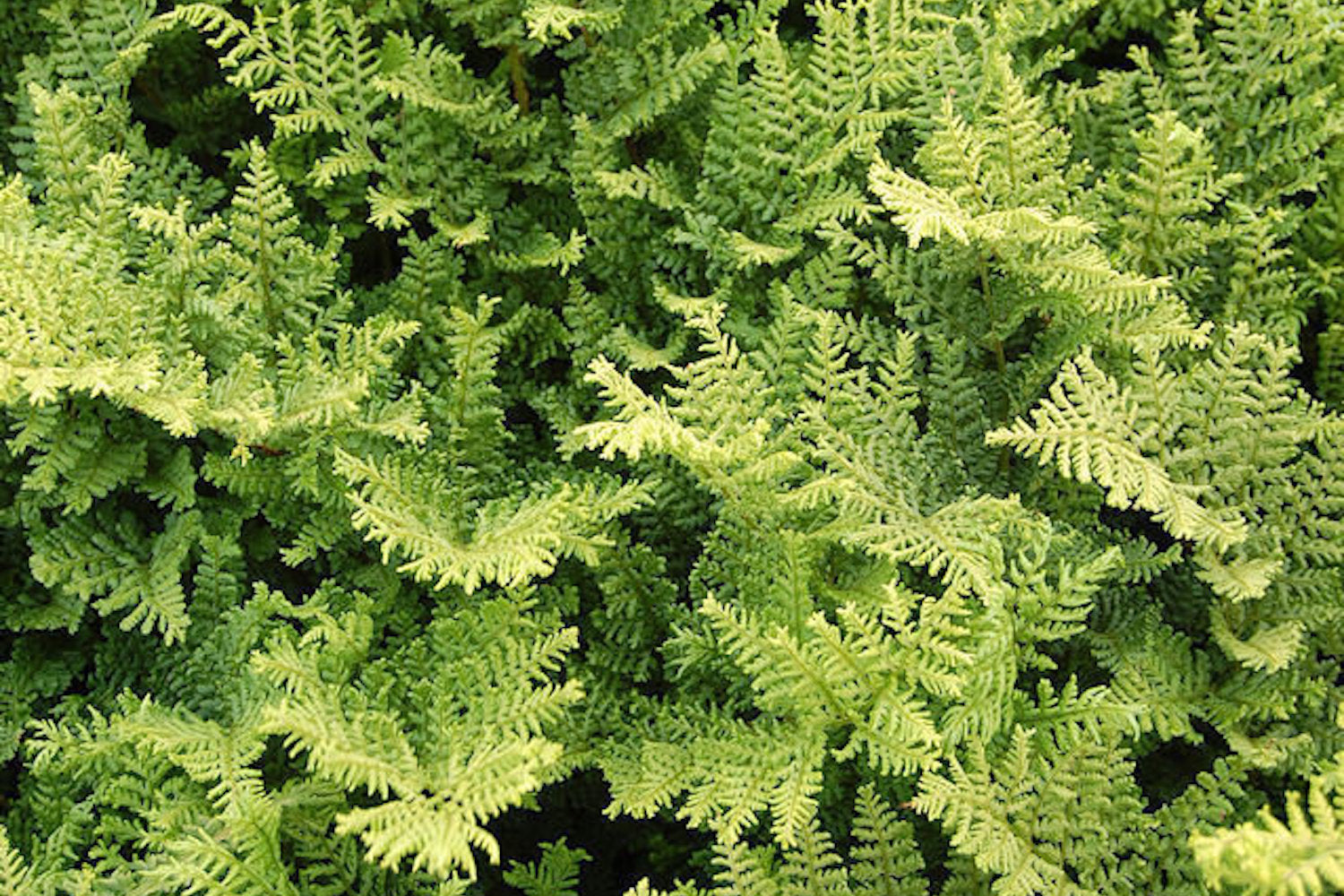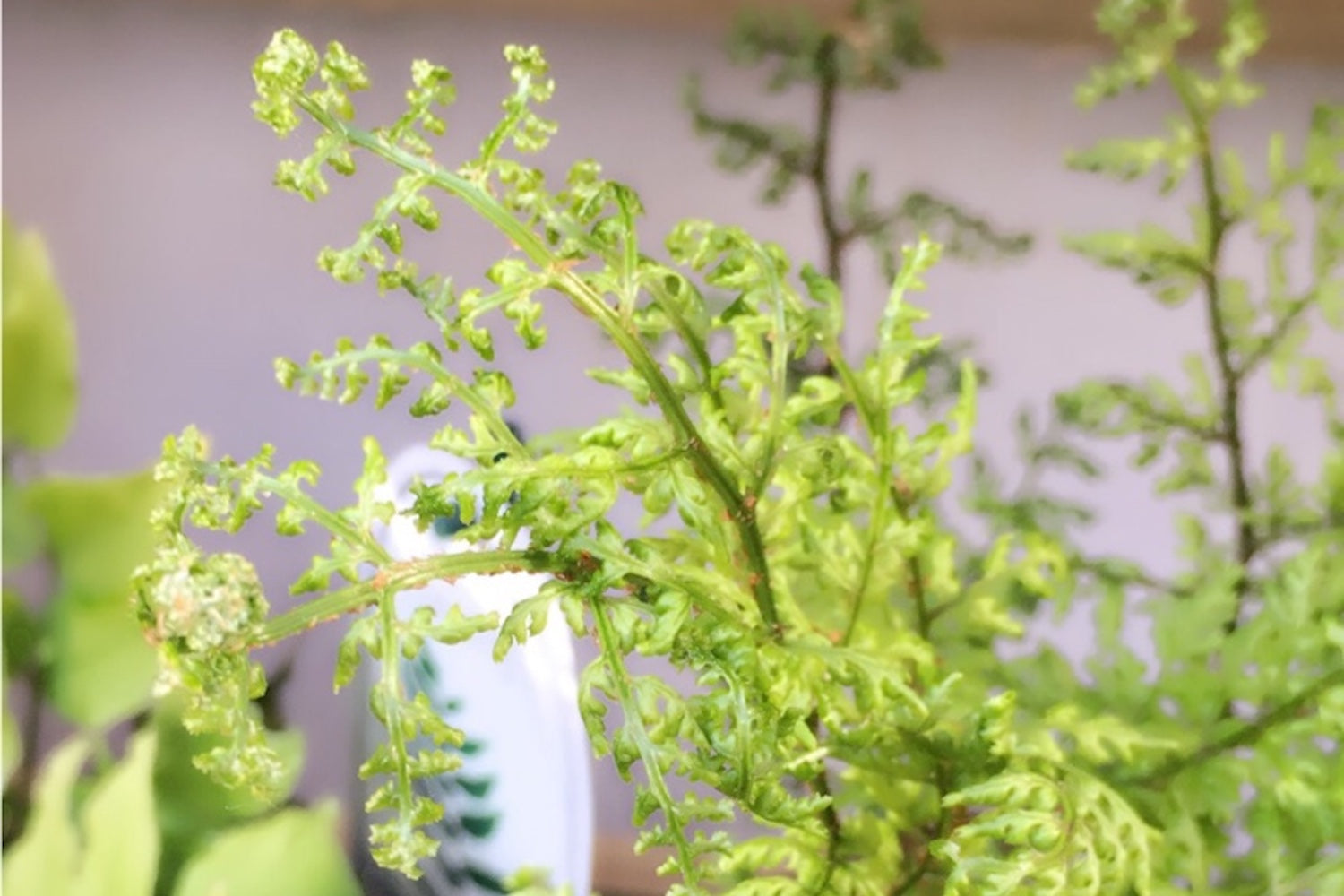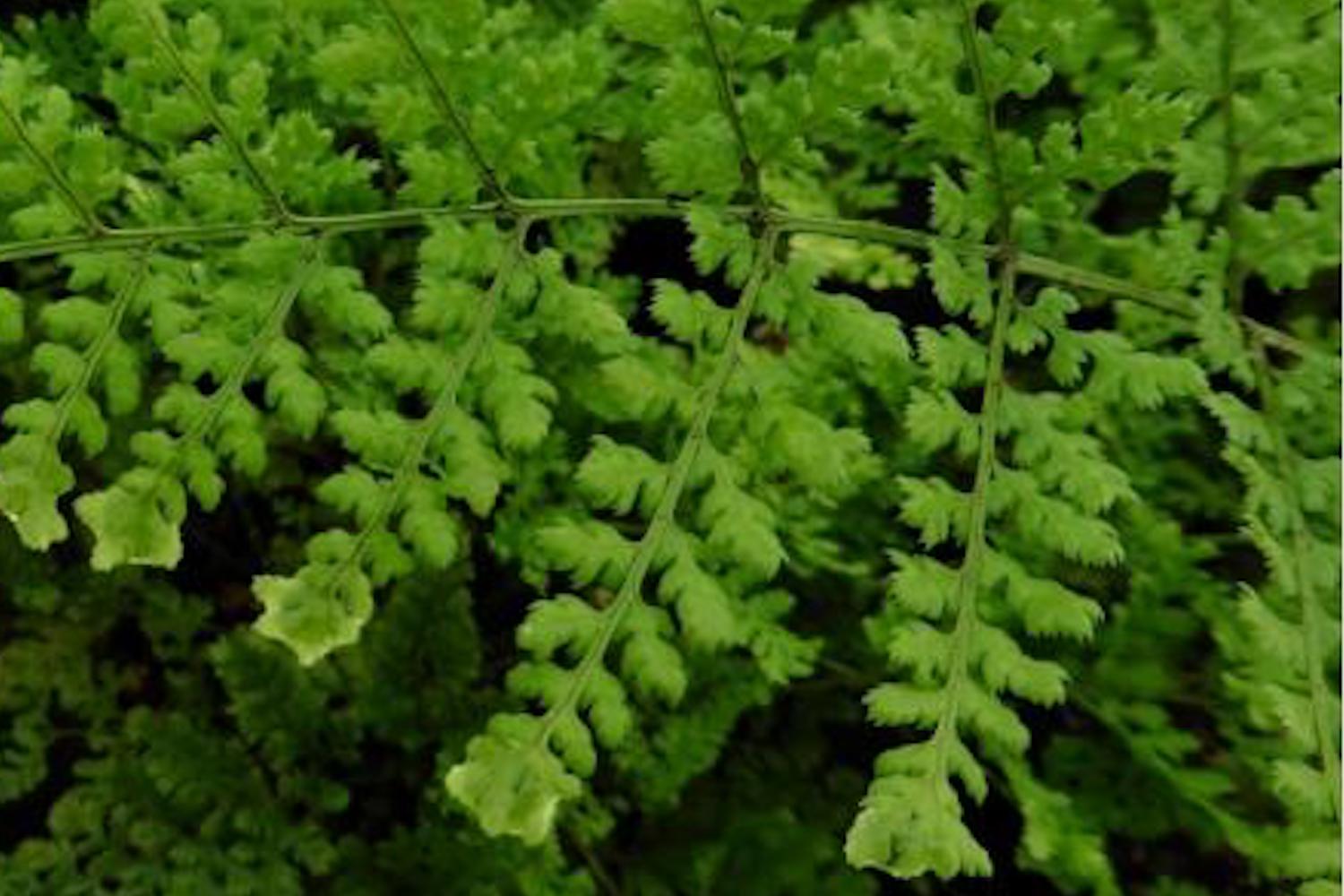Dryopteris dilatata 'Lepidota Cristata'
Approx. 0.5 litre pot
About this cultivar:
Dryopteris dilatata 'Lepidota Cristata' is a smaller, crested form of the species that has a lacy appearance. Commonly called crested wood fern, crested buckler fern, or Lacy Crested Broad Buckler Fern. It typically forms a spreading clump of crested, finely-dissected, lacy dark green fronds with narrow pinnules and reddish-brown scales. It has a more uneven growth than the species as a whole, its fronds resembling sprigs of parsley more than the flat triangular leaf of the species.
The specific epithet (lepidota) is derived from the Latin word lepidotus, a latinization of the ancient Greek word lepidōtos, meaning 'scaled'. Cristata means 'crested' or 'tufted'.
Dryopteris dilatata is often called the broad buckler-fern and is native to Europe, particularly western and central Europe. The Latin specific epithet dilatata means 'spread out' in reference to the fronds.
- Position: Full shade, partial shade
- Soil: Almost any soil, grows well in Ballyrobert
- Flowers: -
- Other features: Grows well in Ballyrobert, Woodland Plant, Dappled Shade or Full Shade Loving, Interesting Foliage or Fruit, Royal Horticultural Society Award of Garden Merit (RHS AGM)
- Hardiness: H6 - Hardy in all of UK and northern Europe (-20 to -15°C), Fully hardy - grows well in Ballyrobert!
- Habit: Tufted, Clump forming
- Foliage: Semi evergreen
- Height: 30 - 60 cm (2 - 3 ft)
- Spread: 30 - 60 cm (2 - 3 ft)
- Time to full growth: 5 to 10 years
- Plant type: Herbaceous Perennial, fern
- Colour: Green
- Goes well with: Shade
About this genus:
Dryopteris is a fern genus of 225 species from around the world that give us the majority of our great garden ferns. The genus name comes from the Greek words drys (tree) and pteris (fern) in possible reference to this fern's typical habitat in woodland areas. It is a good idea to put Dryopteris (male ferns) near Athyriums (lady ferns) for reasons that (I hope) are obvious.
Dryopteris species come in a variety of shapes and sizes. Most gardeners assume that all ferns are green but Dryopteris species have variation in that regard - which ironically makes many people think they a dying or drying out! - once a week I have a customer telling me they need watered! The new growth on some species may be copper or cinnamon or even black.
Like most garden ferns, Dryopteris plants prefer light shade, almost full shade. Soil wise - anything that isn't too extreme. How to use them? Well... try shady areas!






